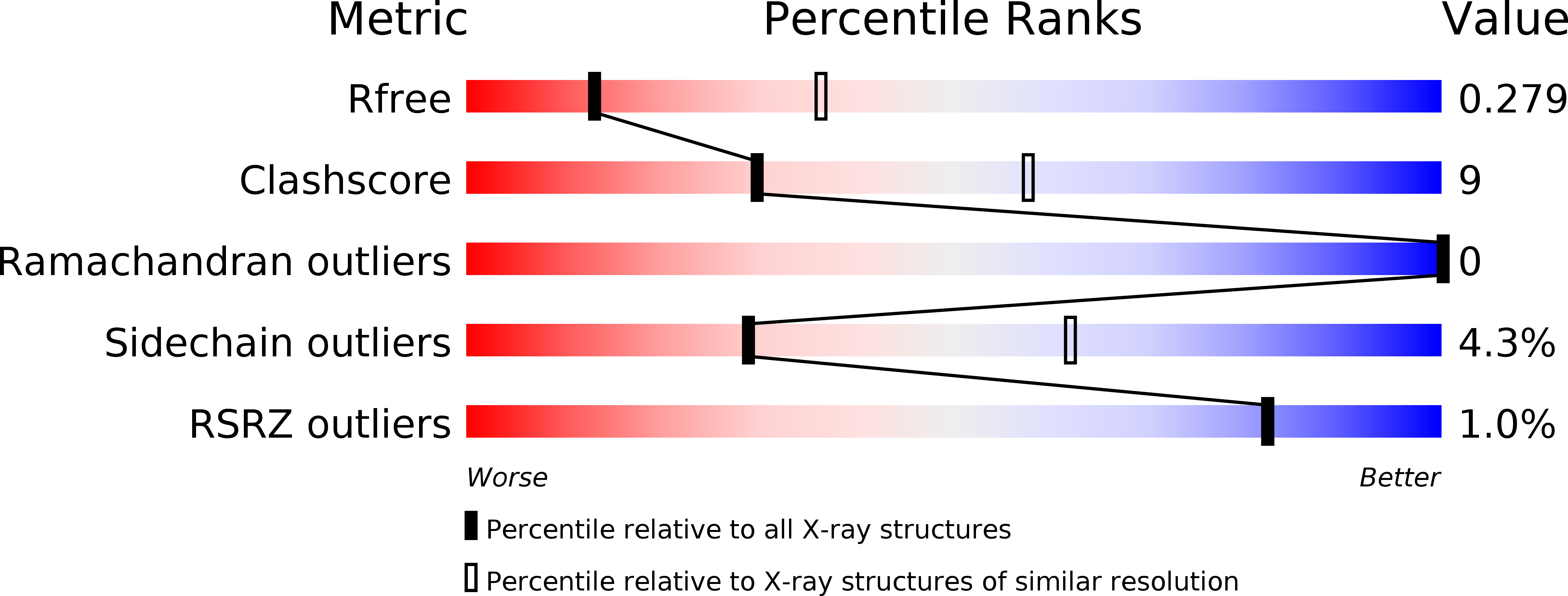Structure and function of the hypochlorous acid-induced flavoprotein RclA fromEscherichia coli.
Baek, Y., Kim, J., Ahn, J., Jo, I., Hong, S., Ryu, S., Ha, N.C.(2020) J Biological Chem 295: 3202-3212
- PubMed: 31988242
- DOI: https://doi.org/10.1074/jbc.RA119.011530
- Primary Citation of Related Structures:
6KGY, 6KOD, 6KYY - PubMed Abstract:
In response to microbial invasion, the animal immune system generates hypochlorous acid (HOCl) that kills microorganisms in the oxidative burst. HOCl toxicity is amplified in the phagosome through import of the copper cation (Cu 2+ ). In Escherichia coli and Salmonella , the transcriptional regulator RclR senses HOCl stress and induces expression of the RclA, -B, and -C proteins involved in bacterial defenses against oxidative stress. However, the structures and biochemical roles of the Rcl proteins remain to be elucidated. In this study, we first examined the role of the flavoprotein disulfide reductase (FDR) RclA in the survival of Salmonella in macrophage phagosomes, finding that RclA promotes Salmonella survival in macrophage vacuoles containing sublethal HOCl levels. To clarify the molecular mechanism, we determined the crystal structure of RclA from E. coli at 2.9 Å resolution. This analysis revealed that the structure of homodimeric RclA is similar to those of typical FDRs, exhibiting two conserved cysteine residues near the flavin ring of the cofactor flavin adenine dinucleotide (FAD). Of note, we observed that Cu 2+ accelerated RclA-mediated oxidation of NADH, leading to a lowering of oxygen levels in vitro Compared with the RclA WT enzyme, substitution of the conserved cysteine residues lowered the specificity to Cu 2+ or substantially increased the production of superoxide anion in the absence of Cu 2+ We conclude that RclA-mediated lowering of oxygen levels could contribute to the inhibition of oxidative bursts in phagosomes. Our study sheds light on the molecular basis for how bacteria can survive HOCl stress in macrophages.
Organizational Affiliation:
Department of Agricultural Biotechnology, Center for Food Safety and Toxicology, Center for Food and Bioconvergence, and Research Institute for Agriculture and Life Sciences, CALS, Seoul National University, Seoul 08826, Republic of Korea.





















